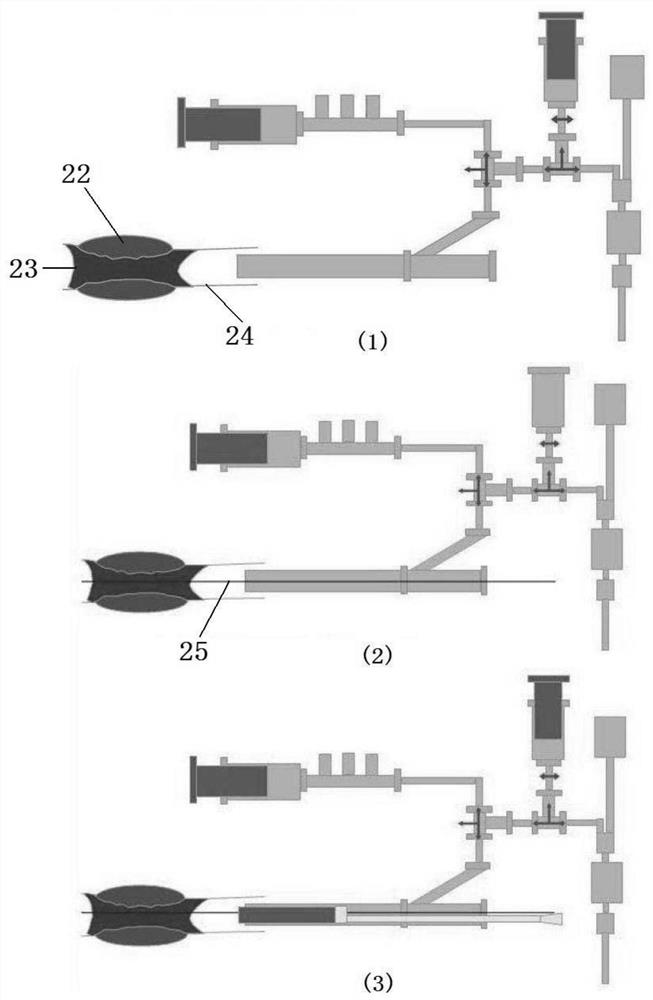Quick exchange type large-cavity thrombus aspiration catheter and use method thereof
A suction catheter, exchange-type technology, applied in catheters, balloon catheters, medical science, etc., can solve problems such as limited scope of application, coronary embolism, thrombus shedding and blockage
- Summary
- Abstract
- Description
- Claims
- Application Information
AI Technical Summary
Problems solved by technology
Method used
Image
Examples
Embodiment Construction
[0027] 1. Basic structure
[0028] Such as figure 1 As shown, the rapid-exchange large-cavity thrombus aspiration catheter of the present invention is based on the Guidezilla II extension catheter, and a closed balloon is designed at the end of the guide catheter segment, specifically, a closed balloon surrounding the catheter is arranged on the outer wall of the guide catheter end. The balloon, the closed balloon communicates with the Luer connector needle seat provided at the end of the handle through the central cavity of the push rod.
[0029] 2. Working principle
[0030] Such as figure 2 As shown in Fig. 1, the fast-exchange large-lumen thrombus aspiration catheter is sent into the distal end of the guide catheter through the guide wire, and the needle seat of the aspiration catheter is connected to the pressure pump, and the balloon is inflated or returned by the pressurization or decompression of the pressure pump. Constriction, so as to realize sealing or not clos...
PUM
 Login to View More
Login to View More Abstract
Description
Claims
Application Information
 Login to View More
Login to View More - R&D
- Intellectual Property
- Life Sciences
- Materials
- Tech Scout
- Unparalleled Data Quality
- Higher Quality Content
- 60% Fewer Hallucinations
Browse by: Latest US Patents, China's latest patents, Technical Efficacy Thesaurus, Application Domain, Technology Topic, Popular Technical Reports.
© 2025 PatSnap. All rights reserved.Legal|Privacy policy|Modern Slavery Act Transparency Statement|Sitemap|About US| Contact US: help@patsnap.com



